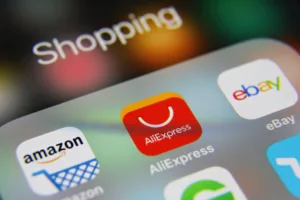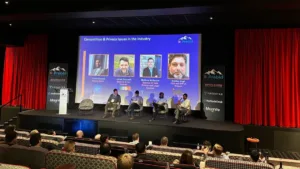As ChatGPT celebrates its first birthday, Nick Floyd, Head of Content at digital marketing agency Catalyst explores whether all the hype has been justified…
It’s hard to believe, but 30th November marked one-year since artificial intelligence (AI) company OpenAI released ChatGPT. Having set the record for the fastest ever growing user database, according to the latest available data is now boasts around 180.5 million active users. Many of them will have employed it to boost their productivity and learning, using it for everything from answering trivia questions and providing cohesive explanations of all types of topics to drafting copy and documents.
Right now, the good news is the basic version of ChatGPT is free for anyone to use, regardless of what it is used for, and how often.
But while undeniably powerful, the reality is that, at least from our experience, ChatGPT like all other generative tools does come with certain limitations. Despite the hype, it is not quite ‘all conquering’; it cannot be used in silo and must be supported with a certain level of human oversight. To understand why, let’s explore just a few of the ways you can use this tool.
To begin with, one of ChatGPT’s major plus points is its ability to provide a swift response to most questions. By comparison, Google’s SERPs seem relatively archaic. ChatGPT seamlessly sifts through search results, proving itself as an invaluable research tool, especially when it comes to quickly accessing succinct summaries of complex concepts.
Fundamentally though, it often makes mistakes. Because ChatGPT is not connected to the internet, it is only able to give you access to information or resources after 2021, and cannot provide you with a direct link to the source of the information. This means that there can be huge scope for inaccuracies and misinformation – as demonstrated as various tests have revealed it to fail completely on quite basic questions. This makes fact-checking essential. By comparison, Google results are in real-time and include full sources (most of the time).
Onto another key concern which we continue to see – does ChatGPT, with its ability to draft copy, college-worthy essays and even poetry – spell the end of the copywriter?
The answer, which I’m sure is music to the ear of many a pen smith, is no, not really. Having used ChatGPT on occasion to prompt blog posts or articles for our website, it’s not the complete package just yet. It requires a lot of prompting and amends before there is something even close to the high standard we expect of our content.
To this end, while it can be great for helping to create a basic copy outline, a certain level of human intervention (often a lot), is necessary. As a general rule, AI is much better at helping you research a topic, rather than writing the whole thing for you.
This takes me onto another, less documented issue. Inherently, SEO is the holy grail of the digital marketing world. But getting it right requires a carefully articulated programme of original content enriched with relevant keywords.
Imagine a world where all businesses in an industry, say finance, use ChatGPT to draft similar blogs on ‘2024’s biggest fintech trends.’
If those firms don’t take the time to customise the blog post, they run the risk of producing near-enough the same blog as everyone else; we’re looking at a world where every business is saying the same things in the same way – without emotion or a personalised touch.
Of course, at the moment this risk is relatively minimal. Most ChatGPT outputs aren’t good enough to be used without editing from a professional. However, it’s worth keeping in mind that AI is in its infancy – this is the worst version of AI we’ll ever have. It remains to be seen how AI will navigate SEO in the future as tech develops.
Finally, let’s consider the backbone of most modern businesses – creativity. Done well, creativity can help companies to develop unique offerings and identify new opportunities. It can also help businesses to adapt to evolving market conditions and new customer behaviours, and build resilience during tough times.
This is where ChatGPT falls really short. Yes, it can help spur ideas and support divergent thinking. For example, if you ask it for ‘ideas for a new footwear launch’ it will likely provide some suggestions that, while not usable, offer food for thought. However, a ‘creative’ it is not.
Fundamentally, all AI tools have limited creativity because they rely on using massive amounts of prior data to learn. Put simply, this means that there is no way to truly think of novel ideas that don’t yet exist. Importantly, creative concepts often rely on an emotionally-charged connection between brand and consumer – something AI can’t account for. Therefore, while it can be used to help support the creative process, that’s not to say it can help brands come up with their next big idea.
It’s also important to remember that creativity is a team sport which is best played in a dynamic, collaborative setting. Taking time out of a brainstorm to ask a robotic tool for input is hardly conducive to energetic, team-fuelled idea generation.
So, in the end, while we can say that ChatGPT is a hugely impressive tool, it is far from the finished article. Yes we can take help from it but talk surrounding its potential to take over is largely just hype. Put simply, there is still no AI or chatbot ready to replace human intelligence…yet.









